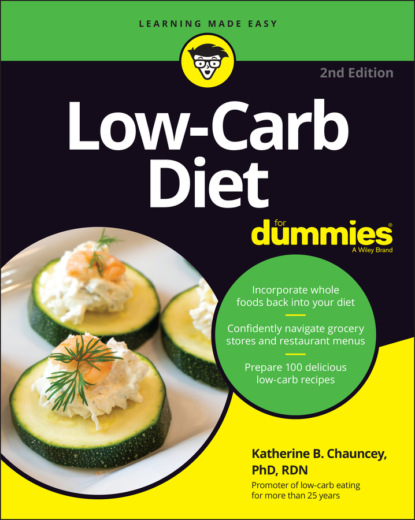Check out Chapter 3 and Appendix A for more information on glycemic load.
Looking at the changes in food intake and the increase in obesity in the past 20 to 30 years, it’s pretty obvious that Americans have gotten away from eating basic whole foods. Much of what Americans eat is processed, refined, or somehow changed from its original form. The intake of fruits, vegetables, whole grains, lean protein sources, and good fats is severely lacking.
Unveiling the plan
The Whole Foods Weight Loss Eating Plan is designed to help you get back to eating basic healthy foods in a satisfying way. The plan shows you how to lower your total carbohydrate intake in a safe and satisfying way, and it explains how you can replace the refined sugars and flour products in your diet with whole, unprocessed fruits and vegetables. Not only do you discover how to eat quality lean proteins and protective fats, but your appetite needs will be met naturally, and you won’t be hungry. Your body will thrive on the nutrients you’re feeding it rather than wilting on empty calories. You’ll naturally start to lose your surplus fat and your health and energy will soar.
The Whole Foods Weight Loss Eating Plan consists of the following:
Vegetables and whole fruits
Lean protein, fish, and poultry
Low-fat cheese, low-fat milk (or dairy alternatives), and yogurt
Moderate amounts of fat, especially monounsaturated and polyunsaturated fats such as avocados, olives, olive oil, peanut oil, canola oil, flaxseed oil, and sesame seeds; and nuts and seeds
Whole grains, and starchy vegetables such as legumes and corn
Sugar, white flour, and other refined grains are limited on the Whole Foods Weight Loss Eating Plan, as are fried foods, processed snack foods and processed meats. The following sections discuss the three categories on the plan.
Green Light foods
The green light means go. You can move around freely in this section and eat as much as you need to satisfy your hunger. Green Light foods include lean meat, fish, poultry, eggs, low-fat cheese, low-fat cottage cheese, salads, nonstarchy vegetables, and fresh whole fruits.
For a full list of Green Light foods, check out Chapter 5. You can also find a great shopping list in Appendix B — don’t miss it!
Yellow Light foods
The yellow light is the control feature of the Whole Foods Weight Loss Eating Plan. It allows for your weight loss and lowers your triglycerides and blood sugar if they’re elevated. You’re allowed five carbohydrate choices per day from the Yellow Light group.
A carbohydrate choice is a food that supplies 15 grams of total carbohydrate per serving. (Green Light foods don’t count toward this number.) Your five carb choices should ideally be whole grains, beans, or starchy vegetables, but they can be a piece of cake or candy, or a cookie. (Everyone needs a sweet now and then.)
Examples of Yellow Light carb choices include the following:
One slice of regular bread
½ cup pasta or cereal
½ cup potatoes, beans, or corn
One serving (15 grams carbohydrate) chips, cookies, cake, or candy
Check out Chapter 6 for the real deal on using your carb choices each day.
In addition to the five carbohydrate choices, you’re allowed the following every day:
Two to three servings from the dairy group, which includes skim or low-fat milk, and low-fat yogurt. The carbohydrate in these foods isn’t counted.
Eight monounsaturated or polyunsaturated fat choices like avocados, almonds, cashews, peanuts, olives, canola oil, olive oil, or peanut oil; or polyunsaturated fats such as tub or squeeze margarine, reduced-fat mayonnaise, Miracle Whip, salad dressing, corn oil, safflower oil, soybean oil, or sunflower or pumpkin seeds.
For the full scoop on fats, take a look at Chapter 8. Track down the dairy story in Chapter 7.
Red Light foods
Although the Whole Foods Weight Loss Eating Plan doesn’t have foods in the Red Light category, red is important because it simply means, “Stop and think! You’re about to exceed the limit.” No food is absolutely forbidden on the Whole Foods Weight Loss Eating Plan. You just want to make sure that most of the time your five carbohydrate choices per day come from legumes, whole grains, and starchy vegetables in the Yellow Light category. But, if you must have a treat, you can trade it for an equivalent amount of Yellow Light food.
Stopping is what you should do when you’re faced with breads, cookies, cakes, pastries, cereals, gravies, thickened soups, sugar, syrup, chocolate, or soft drinks that can cause you to exceed your carbohydrate limit. These highly refined carbohydrate foods can spike your blood sugar and stimulate your insulin response. You’ll find yourself with hard-to-control hunger the rest of the day. When you do occasionally indulge in these foods be sure to make them part of the five carb choices and you’ll not experience erratic blood sugar and insulin levels.
Knowing who can benefit from the plan
If any of the following describes you, you can benefit from the Whole Foods Weight Loss Eating Plan
You’ve tried other weight-loss plans and have been unsuccessful.
You’re overweight or obese (BMI 25 or over for overweight; BMI 30 or over for obesity).
You have or are at risk of developing type 2 diabetes or insulin resistance.
You have high triglyceride concentrations in your blood.
You have borderline or high blood pressure.
Check out Chapter 4 to determine if lower-carb eating is for you.
Chapter 3
All Carbs Aren’t Equal: Looking at the Differences
IN THIS CHAPTER
Where is carbohydrate? It’s in sugar, bread, potatoes, cereal, pasta, beans, chips, cookies, cake, soft drinks, fruit, vegetables, and dairy. It’s even a substance
